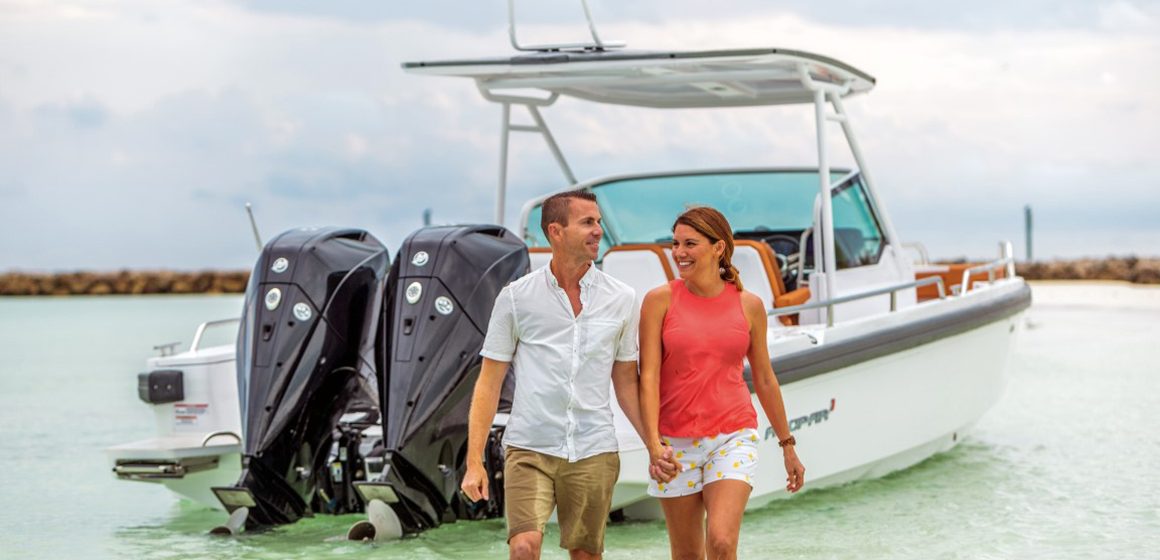

In the United States the California Air Resources Board has proposed all-new emissions standards for outboard engines. Meeting those targets will require the use of catalytic converters, driving up costs as they did for sterndrives and inboards a decade ago.
To say that 2020 was a wild year for outboard engine manufacturers would be putting things mildly. Outboard production ground to a halt early in the year with the global spread of Covid-19, then surged as infections dropped and a new generation of young families suddenly discovered boating, driving demand for boats and engines and creating worldwide shortages of both. The landscape changed even further when BRP shut down its Evinrude outboard business in May, and Volvo Penta closed the doors on its Seven Marine outboard business in November.
Amid all that upheaval, the publication of a single page of recommendations for new outboard engine emission standards would be easy to overlook – all the more if it came buried in a package with dozens of other environmental proposals. But that’s precisely what happened on September 30 when the California Air Resources Board (CARB) published its 2020 Mobile Source Strategy Workshop Discussion Draft.
Within the document’s 145 pages is a single sheet – page 115 – which calls for new emissions standards for outboard engines, and those four short paragraphs could drive the cost of new engines skyward.
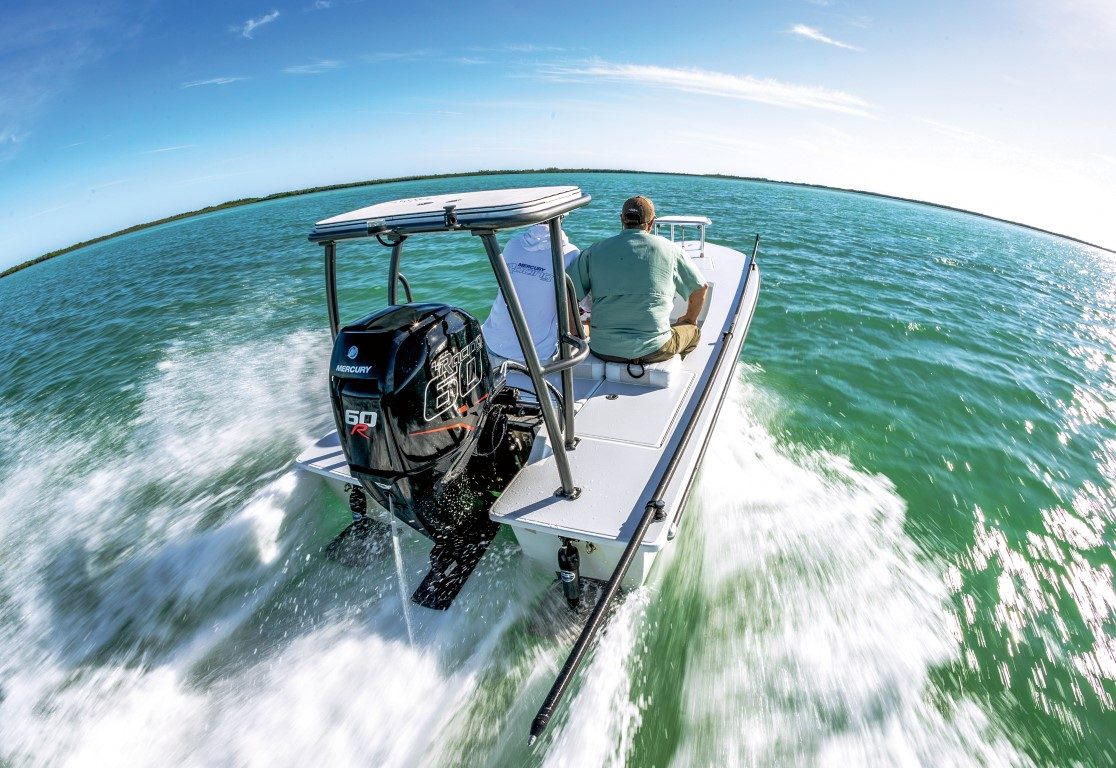
That CARB document largely flew under the radar when it was released into a world already struggling with a global pandemic. Yet amid a wide range of proposals dealing with everything from wind turbines to forklifts it calls for significant changes to emissions standards for outboard engines – specifically, emission reductions of 40% below today’s standards for engines of less than 40kW power output (approx. 50hp), and cuts of 70% below today’s levels for engines above that threshold.
The new standards, which would also be applied to personal watercraft, are suggested to take effect in 2027. The document further suggests that engines of less than 19kW (approx. 25hp) simply be replaced with electric motors altogether, with a 10-year phase-in period.

While just a draft proposal for now, the recommendations fall in line with a recent commitment by California Governor Gavin Newsom to ban all but zero-emission vehicles within the state by 2035, almost assuring their adoption at the state level. Because CARB recommendations are frequently adopted by the US Environmental Protection Agency (EPA) and go on to form the basis for national policy in the US (and, by extension, in multiple other countries worldwide), the proposals are being closely followed by the entire boating industry.
Here We Go Again
Outboard engine manufacturers watched closely in 2008 as a very similar proposal led to the State of California passing legislation mandating new emission standards for marine inboard and sterndrive engines. Those new emissions standards, which effectively required inboards and sterndrives to include catalytic converters, became national standards two years later when they were adopted by the EPA and subsequently went on to become global standards by default. Because the cost of building different engines for different standards in different countries is cost-prohibitive, engine builders manufacture a single engine that meets the most restrictive guidelines, and everyone pays the premium.
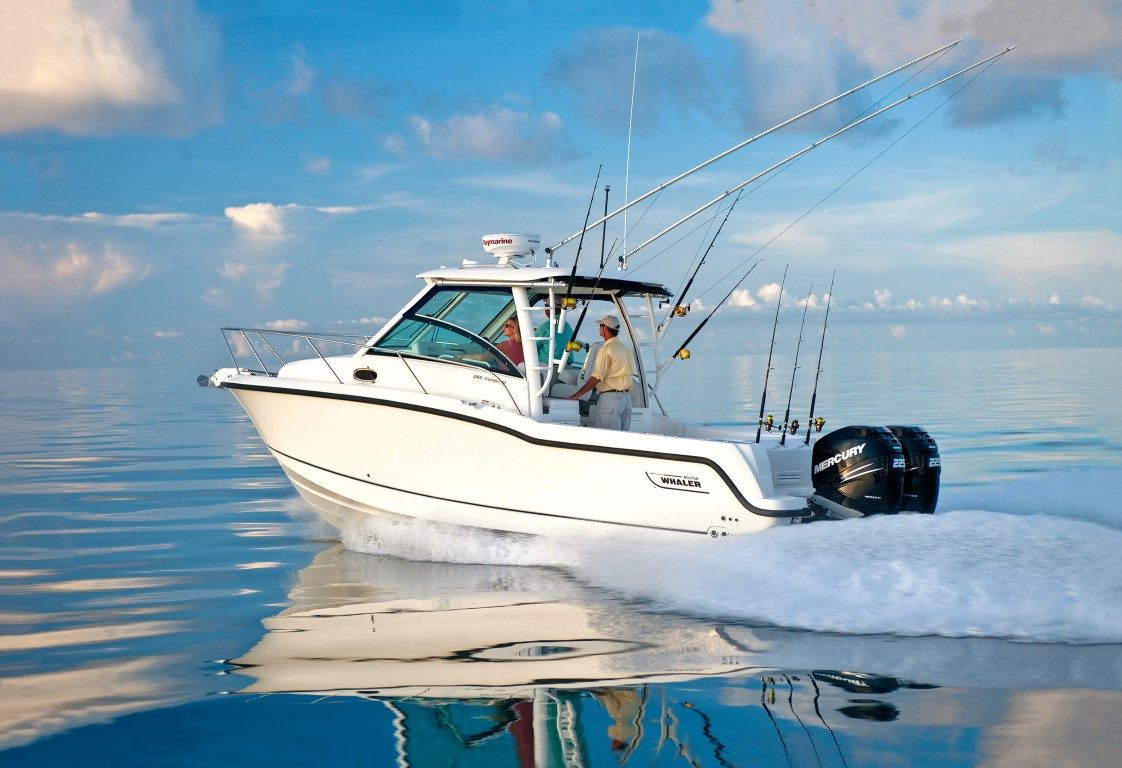
Amendments to emission guidelines tend to work on 10- to 12-year cycles, so new proposals related to outboards were not completely unexpected. But because the proposed emission targets will require making wholesale changes to the way outboard engines are built, none of the engine builders are embracing the idea.
Meeting the new targets will require engine builders to find a way to implement closed-loop fuel control systems and catalytic converters into their engine designs – a difficult enough challenge when dealing with inboard and sterndrive engines that are mounted inside the hull, but even more so when considering outboards, which are obviously mounted outside of the boat in fully-enclosed shells.
“We know that the concept of fitting a catalytic converter on an outboard engine is feasible,” says John McKnight, senior vice president, environmental and safety compliance with the National Marine Manufacturers Association (NMMA). “But the challenges of fitting one to an outboard are much different than for an inboard or a sterndrive.”
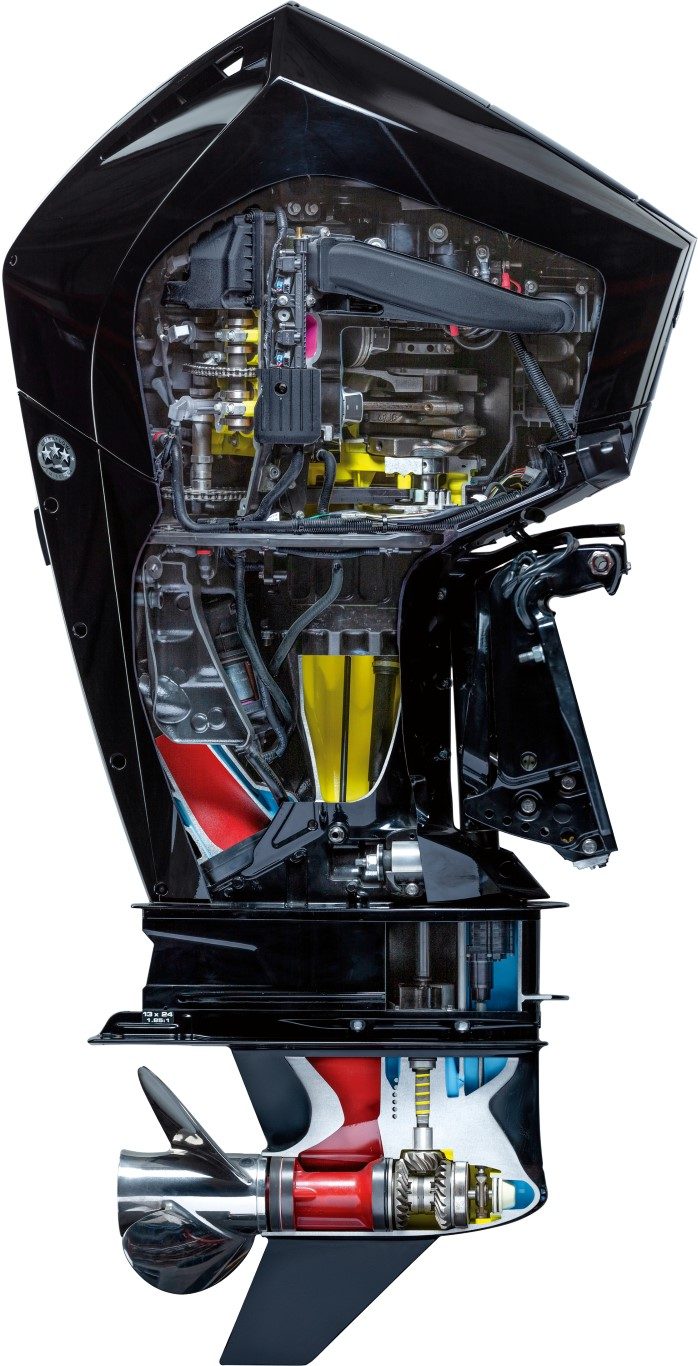
McKnight notes that beyond simply having to find physical space under the cowling to accommodate the bulk of the additional equipment, engineers will need to find a way to deal with the tremendous heat that virtually all catalytic converters emit. In cars and trucks, converters typically operate at temperatures ranging from 400oC to 600oC and can get hotter than that, reaching temperatures of up to 1,000oC. Exactly how manufacturers will be able to prevent that kind of heat from building up with the confines of an enclosed cowling, and how they will prevent the device from melting the engine’s plastic parts, is anyone’s guess.
The high operating temperatures of catalytic converters also represents a safety concern. “Most importantly, you have to protect the catalyst from any chance of water ingestion,” says McKnight. “They’re extremely hot, and at those temperatures they will basically explode if they get any cold water in them.”

The greatest opportunity for the converter to come into contact with cool water would be when the boat comes off plane and settles back into the water, particularly if power is cut rapidly in an emergency stop. Under such circumstances, the stern of the boat – and the engine – typically plunges low to the water surface, driving water into the exhaust passages.
The fact that existing outboard engine designs routinely have water in the cylinder block portion of the exhaust passage during normal operation significantly limits where the converter and its associated oxygen sensors can be installed. Re-engineering an outboard to prevent converter detonation caused by water intrusion will almost certainly have an explosive effect on costs, and far, far beyond the price hikes we saw when catalytic converters were required to be added to inboards and sterndrives.

The Proof Is In The Pudding
After adapting its inboard and sterndrive engines to meet then-new EPA emissions standards more than 15 years ago, Mercury Marine – perhaps sensing the writing on the wall – began experimenting with fitting catalytic converters to outboard engines way back in 2007. The company’s experiments involved modifying off-the-shelf engines pulled from the production line, including 60hp four-strokes and 200hp Verados.
The results of these detailed and extensive experiments were published in a 2010 report, which pulled no punches in outlining the difficulty involved with fitting outboard engines with catalytic converters. “Because of the integrated and custom nature of outboard engines, this required a significant redesign of the entire system,” writes author Jeff Broman. “For each engine this included changes to the cylinder block, cylinder head, exhaust system, adapter plate, electronic control unit, electrical system, cowling, shift system, various gaskets, and of course, the addition of the catalyst and associated oxygen sensors.”
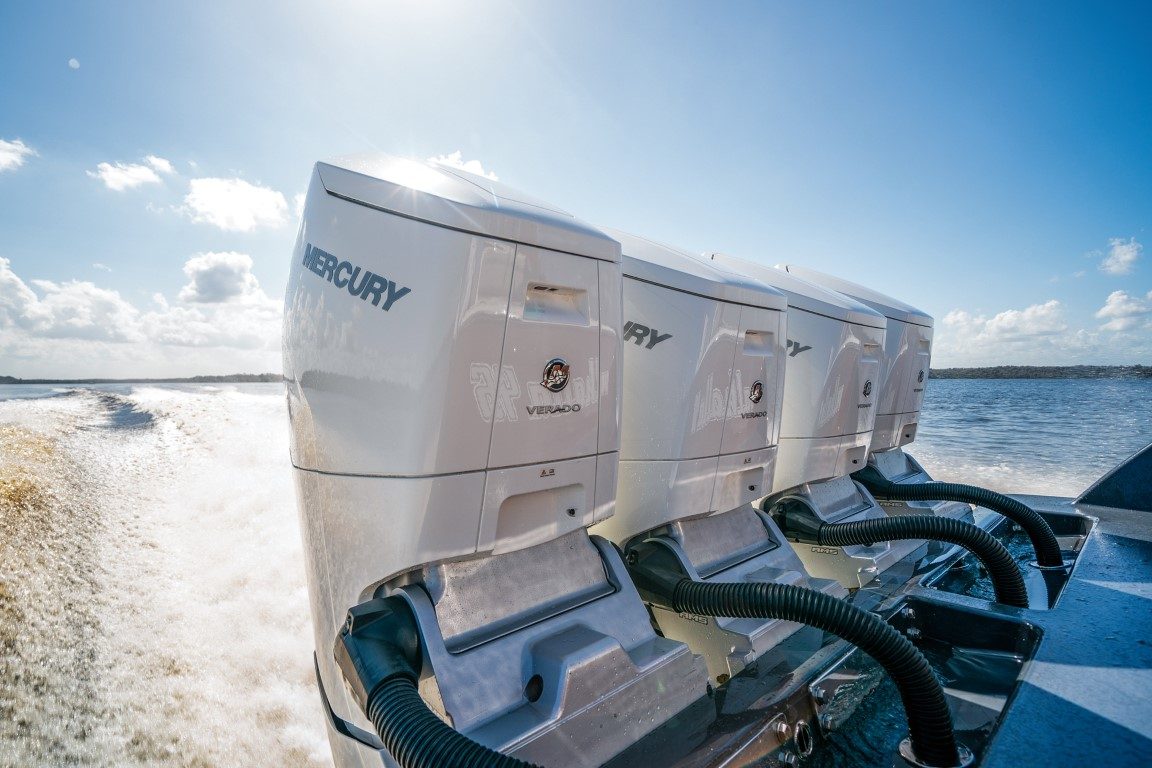
Although the highly-modified engines were eventually able to meet the target reduction levels that would be required in order to achieve the CARB four-star super ultra-low emissions standard for HC and NOx emissions, that success came at a substantial cost. “Based on the magnitude of the changes, a major redesign, redevelopment and validation program will be required for each engine family,” reads the report. “It is reasonable to expect that two to three years will be required, per engine family, to complete a catalyst conversion program.”
Mercury did not include a detailed estimate of the costs to re-engineer multiple engine families in order to achieve across-the-board compliance with higher emissions standards. But a two- to three-year timeline per engine group suggests such costs would almost certainly be significant.
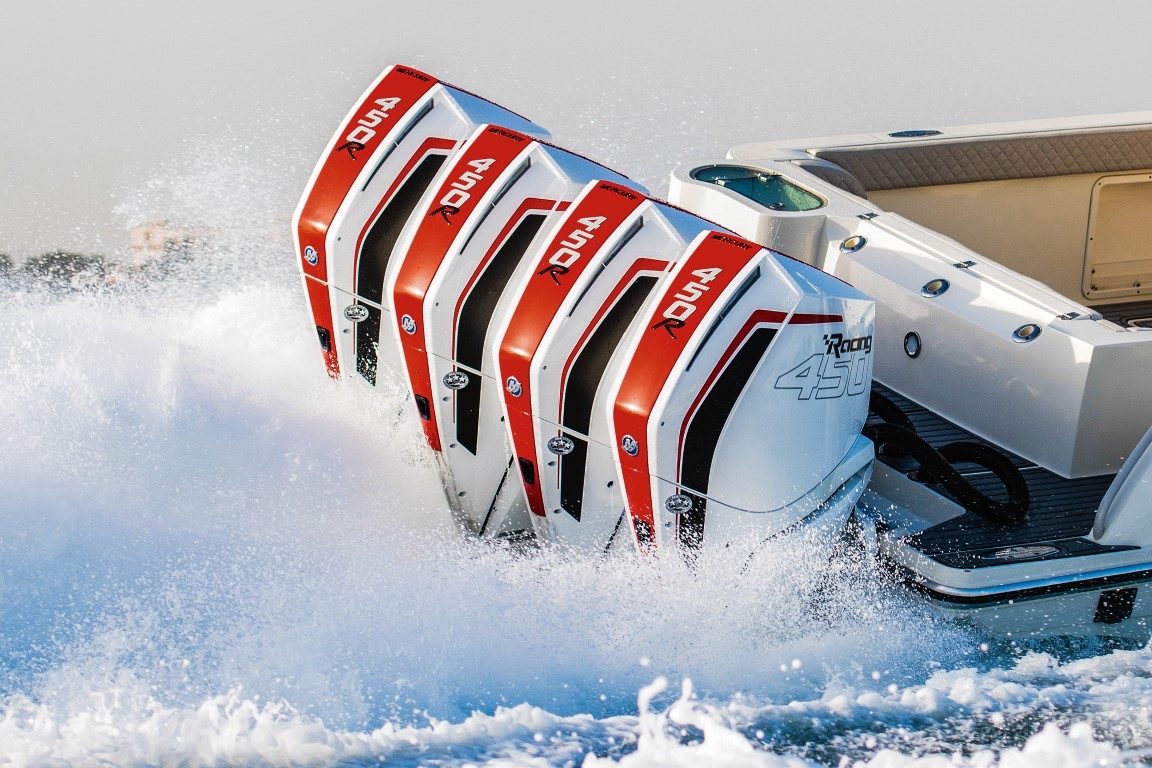
So What’s Next?
Potential costs aside, the biggest challenge associated with the new CARB proposals relates to the 2027 implementation timeline. If Mercury’s estimate of requiring two- to three-years per engine family to achieve compliance is realistic, then there is no way on earth that engine builders will be able to have each of their respective engine families fully transitioned to meet the new guidelines by 2027. That would be an exceedingly ambitious goal in normal times, much less in the grip of a continuing global pandemic that has engine builders still coping with lingering supply chain disruptions.
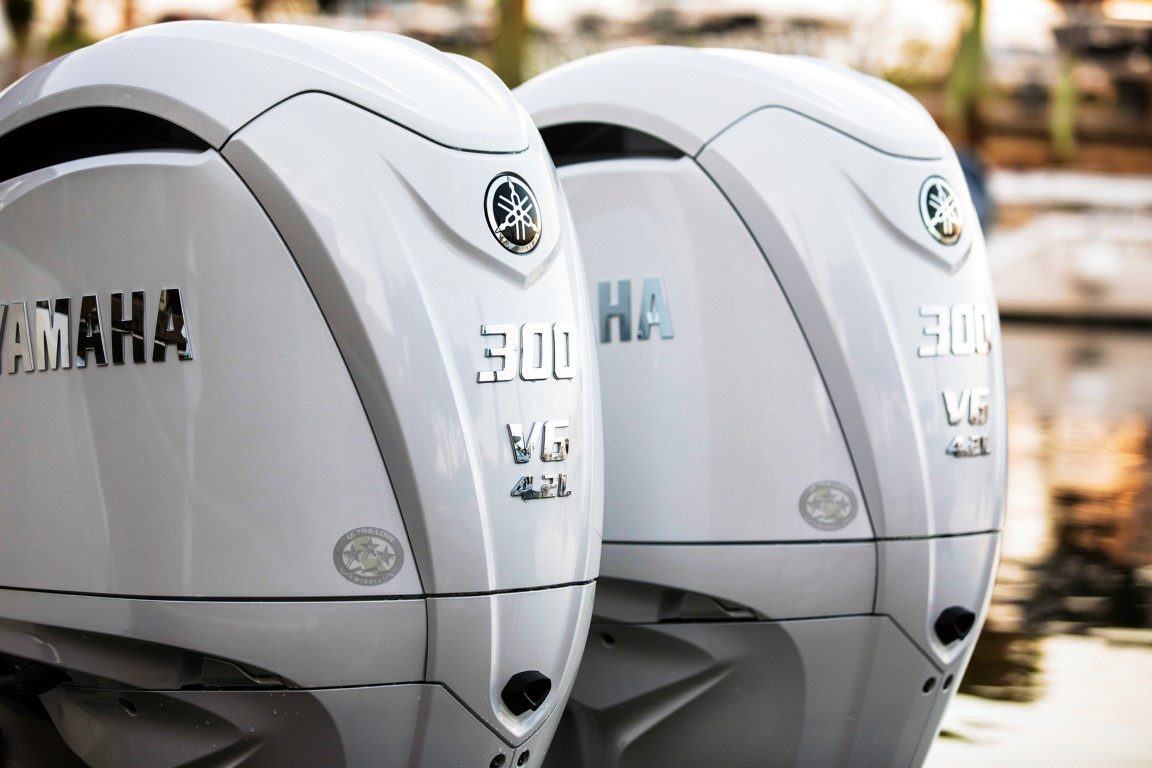
What happens next is unclear at this point, with a new US government administration now at the helm in Washington. The EPA suffered significant budget cuts during the Trump years, and questions around priorities for the Biden administration remain unanswered. “If the focus is going to be on CO2 emissions then we’re totally insignificant,” says McKnight. “We have ideas around reducing CO2 with biofuels and such, but it’s such a small change it’s just not worth the government saying hey, ‘let’s go after recreational marine when there are so many easier targets that would deliver far more significant gains’.
“But if that’s not the case,” he cautions, “then we need to be prepared.”





